| SHORT BIOGRAPHY INCLUDED IN TENDERNESS CD |
| Kip
Hanrahan was born on december 9, 1954, in the Bronx, New York. His
grandparents were irish and russian-jewish immigrants. At the age of
fifteen he receveid a grant for study of art. Beginning with sculpture,
he switched to film studies. At the age of seventeen he moved to
Mahgreb, India with the poet Paul Haines, where he studied Islamic
architecture for one year. In 1972 Kip Hanrahan travelled to various
West African countries, such as Algeria, Mali and Mauretania, becoming
familiar with their music and culture. Back in New York, he worked as a
promoter with the Jazz Composers Association. In 1979 he founded the
American Clavé label. His approach is often compared to the one of a
filmdirector. Coordinating and integrating the musical contributions of
various artists, he his totally involved with the music, while
continously maintaining the detached view of an outsider. This critical
distance, typical of Kip and his work, allows him to explore and
experiment in unexpected directions, resulting in a unique body of work. |
| BEAUTIFUL SCARS TOUR ARTIST SHEET |
| Kip
Hanrahan has constructed a career and history of recorded music and
concerts as complex and unruley as he understands the human heart : an
explosively productive creative relationship with Astor Piazzolla,
resulting in the recordings Piazzolla was vocal about declaring the
"best records of his life...."; a relentless evolving recordings of new
music, and new ways of recording (iconoclastic masterworks, say some,
many....), under his own name as well as "Conjure" (rooted in and
framed by the American Black "Magic Realism" griot words of Ishmael
Reed); a complex but musically awe inspiring, and impossible without
Hanrahan, method of producing other artists like Silvana Deluigi, and
Horacio El Negro Hernandez and Robby Ameen, and his lifetime friend,
Milton Cardona, and records involving Paul Haines, Allen Toussaint and
others... and tours with Hanrahan's own band which at times have
included Jack Bruce (of course), Don Pullen, Allen Tou ssaint, Charles
Neville, Fernando Saunders, Giovanni Hidalgo, Horacio el Negro
Hernandez, Robby Ameen, Carmen Lundy, Little Jimmy Scott (on his first
European tour!), Alfredo Triff Charles Neville and many others... Also,
in the 25 years of living, Hanrahan has continued his need to
make records that are among the most uncompromisingly MUSICAL and
personal made in the world, and of playing concerts, both his
obsessively loyal band of musicians - those that appear on his records
as in his concerts - Bruce, Pullen (well, not now, he's deceaced...),
Toussaint, Cardona, Hernandez, Ameen, Gonzalez, Neville, etc... During
the late 1990s, through 2001, Hanrahan formed, recorded
("recording" sounding comically passive for something that's directed
to the last note.....) and toured with a project called "Deep Rumba". A
band, "Deep Rumba", formed from the absolute best Cuban (including
Buena Vista players, like Amadito Valdez), Cuban American, Puerto Rican
and New York percussionists and singers. With encouragement from
Horacio El Negro Hernandez (Cuba's best trap drummer before his jump to
Italy in 1989) as well as from Xiomara Laugart (Cuba's best singer?
Yeah, REALLY!), Changuitio, Heila Monpie and Dafnis Prieto, and others,
the band toured and recorded, with Charles Neville and other guest
stars from 1998 through 2001, as the most creative and exciting band
formed from the possibilties of Cuban and Latin US musics in the
air.... Great, obsessively greeted tours of Japan, the US and (briefly)
Europe encouraged more.... and more.... But, for Hanrahan, it was time
to move on: it seemed that the audiences were intoxicated by the
quality and vertuosity of the drumming, and the difficulty of the
personal words was covered by the fact that they were sung in Spanish,
not English, so..... Anyway : If an overused, but still accurate
analogue of Mr. Hanrahan's studio
work to that of a movie director still holds, the analogie of Mr.
Hanrahan's stage work to that of a theater director might be in order.
But during a tour, it's not another performance of the same play he
directs each night. ...so.... So! With Hanrahan's new band, there were
two nights in Vienne
last October, and a new record on the way, following up, completing the
heart music started by "Beautiful Scars". And Hanrahan's still
"impossible", and the audience that shows up to see "how" Hanrahan
struggles with Music and Making the Heart heard each night is still
there... And anyone who's confused by what happens on stage is still
open to becoming a lifetime Hanrahan fan...... FAN....... But, each
night on stage, whether it's breathtakingly tanscendental, or
a mixture of blindingly brilliant passages with minor train wrecks,
each night / concert with the Kip Hanrahan band is always a project in
making the heart's music (of that very night) audible, even in it's
frustrations, and should NEVER sound like an excersize in just
reproducing, QUOTING music that's been made and heard before, on other
nights.Mr. Hanrahan often spends the concerts wandering among the musicians,
giving new cues, whispering new musical parts and approaches, and
changing the music (and sometimes the words) each night, directing, and
redirecting the band in an unorthodox manner, disconcerting and
distracting to only those who are unable to hear the music. It's a
method of conducting (what's he going to do? As a conductor count out
the time to the best percussionists in the world?) that was suggested
by a vocal fan, Gil Evans, who originally suggested that Kip do what he
does, start the concert PLAYING, then move to the pen and paper as the
Night defined it's music during the concert. Kip, of course, took it
further, by not even starting by playing or singing, as Gil had
suggested. Each night makes itself heard, in both clarity and
confusion, through Kip and the band members in it's distinction each
time. |
| TELERAMA NEWSPAPER WRITTEN BY MICHEL CONTAT |
| Sur
scène, il rentre, sort, sourit, râle, mais ne joue de rien. Imposteur
ou génie ? Chez les jazzeux, les avis sont très partagés. On se
rappelle encore le premier concert à Paris du New-Yorkais Kip Hanrahan,
en 1985 : foudroyant. Deux disques, Coup de tête (il aime comme peu
d'Américains du Nord le soccer, notre football) et Desire develops an
edge, avaient suscité chez les amateurs une folie de curiosité. Sa
version d'India Song, chantée par Carla Bley, avait sidéré. Qui pouvait
bien être ce jeune musicien producteur-compositeur, créateur de
nouvelles vagues dans la musique enregistrée comme, vingt-cinq ans plus
tôt, Jean-Luc Godard dans le cinéma ? Pour découvrir Kip Hanrahan, le
Casino de Paris était bondé. Le public écouta d'abord avec une surprise
heureuse les Rita Mitsouko, dont la Marcia baila commençait à passer à
la radio. Puis une escouade de percussionnistes New-Yorkais (Haïtiens,
Portoricains, Cubains) déclencha le feu continu et le roulement des
esprits frappeurs derrière des instrumentistes de jazz et un bassiste
chanteur rock-jazz, Jack Bruce, timbre musclé et voix acrobatique. Mais
si la musique emporta la salle, le personnage Kip Hanrahan la médusa.
Il ne jouait de rien, hormis de temps en temps quelques rythmes sur des
bongos, arpentait la scène pour aller parler à l'oreille des solistes,
donnait des signes de mécontentement ou d'approbation, s'accroupissait
sur ses talons pour écouter, disparaissait en coulisses, revenait,
l'air affairé, regardait à peine la salle. Jamais on n'avait vu un chef
d'orchestre se comporter de la sorte, gourou courroucé, technicien
timide, auditeur monté sur scène et qu'on laisse faire pour ne pas
interrompre le jeu. Les musiciens semblaient trouver tout cela normal.
Alors on comprit : Kip Hanrahan n'était pas un bandleader comme Duke
Ellington, Count Basie ou Charles Mingus, mais un metteur en scène, un
producteur travaillant en concert de la même façon, ou presque, qu'en
studio. Des musiciens, aujourd'hui encore, le tiennent pour un
imposteur. Mais c'est qu'ils n'ont jamais enregistré avec lui. Alors
qu'ils sont nombreux les grands artistes qui disent qu'Hanrahan a du
génie : Allen Toussaint, le pianiste, compositeur, arrangeur de La
Nouvelle-Orléans ; Steve Swallow, le bassiste le plus exigeant qui soit
; John Stubblefield et David Murray, les sax ténors, eux-mêmes
créateurs ; Don Pullen, le pianiste créateur d'un style entre le free
et la church music. Génie ? Le génie du casting, rétorquent ceux pour
qui un musicien qui ne joue pas n'est pas un musicien. Le génie de
l'écoute et de la mise en situation, concluent ceux que laissent
pantois ses disques comme ses concerts réussis – il en rate parfois,
car il prend tous les risques. Le lecteur comprend qu'on se range ici
dans la deuxième catégorie – de même qu'Astor Piazzola, qui aura
enregistré pour Hanrahan ses deux meilleurs disques, les plus sensuels,
les plus assurés dans l'expression de la passion : Tango, Zero Hour et
The Rough Dancer and the cyclycal night. Le secret et le tourment de
Kip Hanrahan, fils d'une juive russe et d'un Irlandais né dans le Bronx
en 1954, c'est sa volonté d'indépendance, apprise dans la rue. Ceux de
ses copains de quartier qui sont devenus célèbres sont aujourd'hui tous
plus ou moins otages du show-biz. Kip, lui, reste son propre maître. La
seule fois qu'il a tenté de se vendre (pas sa musique, ses disques), ce
fut Sting, qui eut, il y a dix ans, un label éphémère chez CBS. Kip
attend encore l'argent qui lui est dû. Voilà donc l'un des plus
importants créateurs de musique de notre époque toujours endetté
jusqu'au cou, avec un catalogue de quarante-deux disques qui marqueront
l'histoire, mais dont la plupart ont été très mal distribués jusqu'ici.
Depuis 1996, il s'est lancé dans un projet de nabab de la rue : dix
albums inspirés des Mille et Une Nuits pour restituer, en une musique
où se fondent mille styles issus du jazz et de la salsa, la passion
amoureuse que ce chef-d'oeuvre universel distille et la pulsation de
New York, aujourd'hui. |
| ALL ABOUT JAZZ BIOGRAPHY BY GLENN ASTARITA |
| A
producer, a composer, a percussionist and facilitator, Kip Hanrahan has
an uncanny ability to assemble remarkable musicians and apply their
talents in interesting ways. The results are often magical. His records
are as enigmatic as he is, and maybe that heightens the attraction and
expectation. The results of his American Clavé productions have
garnered a cultist reputation, yet a lot of people have heard them or
at least of them. He chooses to remain in the shadows, an obscure
figure that turns the knobs and brings it all together. Hanrahan’s
recorded legacy speaks volumes of his knowledge and abilities to bring
out the best of musicians that accompany him on his fantastic sojourns.
Kip Hanrahan started out as a percussionist, a fairly left-field
occupation for an Irish-Jewish boy, even if he did grow up in a Puerto
Rican neighborhood of the Bronx, New York. “I don't know where I am in
a sense. People tell me that I am a Latin musician. But at the same
time, it's not my music. I grew up with it and through it, and I
learned it at the same time as everyone else around me learned it. And
I think of Latin music as being my first music. But I'm not a Latin
musician. I'm not from that culture.” After gaining a fellowship in
sculpture at the Cooper Union Arts, in New York, Kip began collect
several musical hats, those of producer, director, writer/arranger and
conductor. However, his most apt headgear would be one of
'facilitator', for Kip has the knack of being able to connect up people
and music together. Kip Hanrahan now has numerous albums to his name.
His discography reads like chapters of a book, or betters still, an
anthology of short stories, each album reflective of a different phase
in his life. “All Roads Are Made of the Flesh,” (1995) is probably his
best known work, a compilation of musical vignettes from Jelly Roll
Morton to full on avant-garde. Kip has also produced three albums for
the late accordion master Astor Piazzolla, the best known of which is
“Tango Zero Hour.” Drawing from a rich vein of rock, jazz and blues
influences, as well as the Latin influence of his formative years, he
has devised a distinctive meld of music, a dialogue between the two
hemispheres of north and south, which is informed by the American
Clavé. (The clavé is the internal rhythmic pulse around which all Latin
music is based.) Kip works with class. Several of the finest Latin jazz
percussionists in the world have toured in his band, notably the Puerto
Rican Giovanni Hidalgo, who left Kip to work with Dizzy Gillespie, and
his protégé Richie Flores, not to forget Milton Cardona, and Anthony
Carillo. There is always a fine supporting cast of Cuban players in a
variety of roles and instruments. Hanrahan’s musical associates are far
too numerous to list or mention here, but on preferred sessions he
worked with bassists Jack Bruce, Andy Gonzalez, and Sting, pianists Don
Pullen, John Beasley, Edsel Gomez, and Allen Toussaint, sax man Charles
Neville, and trumpet man Brian Lynch. More endeavors have included
drummers Robby Ameen, and Horacio ‘El Negro’ Hernandez, along with the
usual all star line up of top tier percussionists as Paoli Mejias. On
his “Deep Rumba/A Calm in the Fire of Dances” (2000) project he
featured the vocal of Xiomara Lougart, who shines on her selections.
Salsa superstar Ruben Blades does a bilingual version version of
“Sympathy for the Devil,” on the “Robby and Negro at the Third World
War” (2004) recording. He did the soundtrack for the movie “Piñero,” in
2001, and covered the NuyoRican poetry of Piri Thomas in “Every Child
is Born A Poet,” released in 2006. One of his latest projects, also in
2006 has been “Conjure: Bad Mouth.” Bottom line for the musical
trajectory of Kip Hanrahan is for the adventuresome listener to dive
and explore the profound depths. Kip Hanrahan’s worldly and highly
artistic approach provides a road map for ongoing success. Most
importantly, Hanrahan paints vivid portraits of life, love and reality
without becoming self-absorbed or overbearing. Overall, his productions
are generally accessible and entertaining while maintaining that
perpetual touch of class.” |
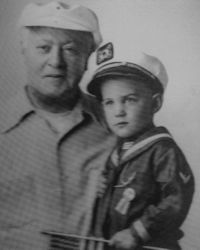 1950's © Kip Hanrahan 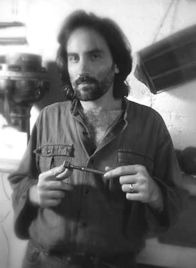 1987 © Enid Farber  1987 © Enid Farber 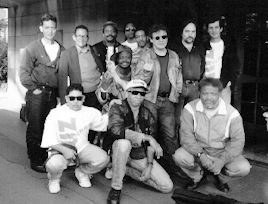 1992 © Jack Bruce 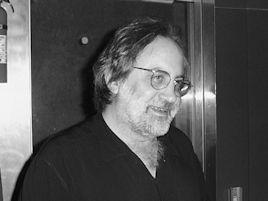 1999 © Jack Bruce 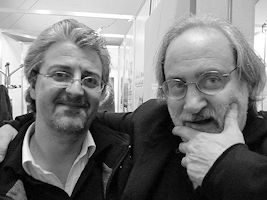 2008 © Jean Philippe Poibeau 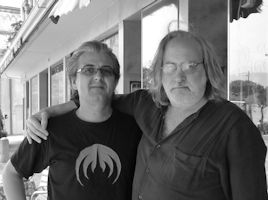 2010 © Jean Philippe Poibeau 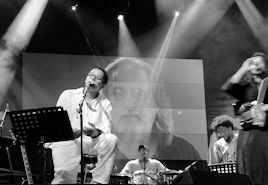 2010 © Jean Philippe Poibeau |